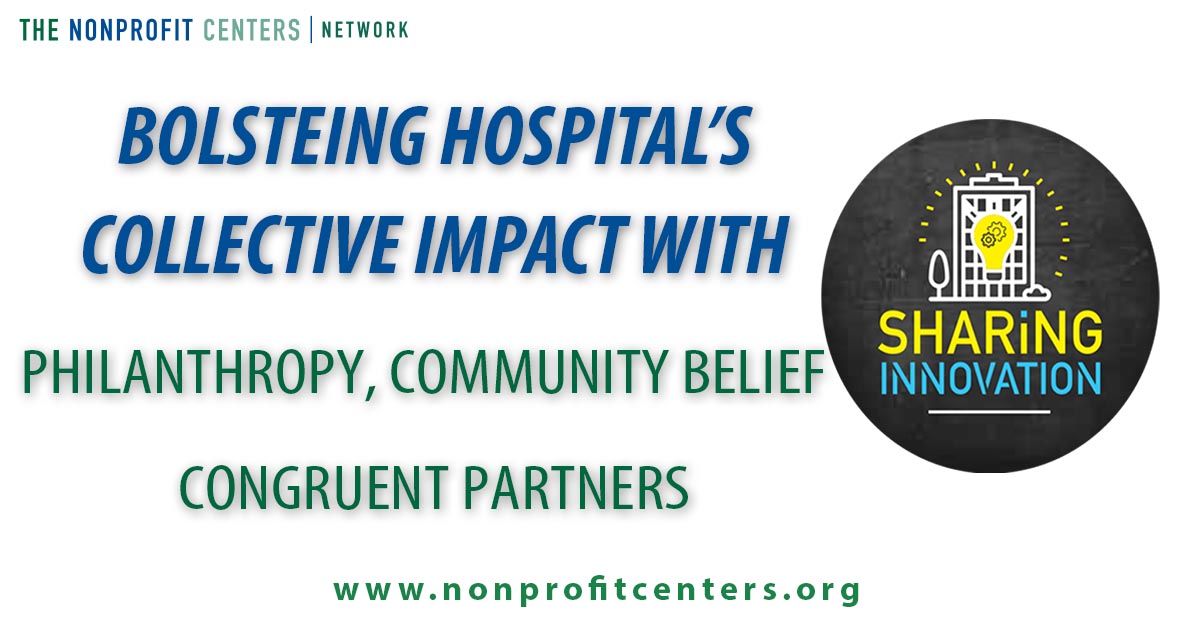We are excited that today’s blog author will be featured as one of 8 presentations at this year’s Sharing Innovation 2019. Like what you read? Register today at www.nonprofitcenters.org/sharingThe role of the hospital is growing. With the continued trend towards population health and diagnosing root causes, rather than only treating the symptoms, hospitals are being forced play larger roles in the health of their patients. As the healthcare industry shifts towards understanding the social determinants of health and adverse childhood experiences (ACES), the previously siloed institutions are no longer the standards in healthcare. The hospital must adapt, and look outside of its walls to better treat the health of its patients. For nonprofit hospitals, looking outside of the hospital walls have always been standard. Through Community Benefit, nonprofit hospitals have been charged with improving the health and well-being of the community. At Hoag Memorial Hospital Presbyterian (Hoag), the opportunity to create a model to address the social and health needs of the community aligned to develop the Melinda Hoag Smith Center for Healthy Living (MHSCHL).
Community Benefit + Philanthropy = New Standard for Community Health
Hoag’s Community Health Department is essentially the Community Benefit arm of the hospital. The programming and services provided through the Community Health Department have been, and continue to focus on meeting the needs of the disadvantaged and underserved populations. Through this mission, the idea of a nonprofit center that functioned through Hoag’s Community Health Department was developed.
The MHSCHL is the first model in the nation where a nonprofit hospital reimagines a 30,000 square-foot building into a nonprofit center to expand its delivery and capacity of Community Benefit. Additionally, the role of philanthropy has been critical in the development of the MHSCHL. In 2015, Hoag Hospital’s Community Health Department was gifted with a philanthropic gift from the George Hoag Family Foundation, to significantly expand life-changing health and wellness programs and services provided to the community, through the Center. The MHSCHL became the first major philanthropic funded program for Community Benefit. The gift provides an incredible opportunity to expand Hoag’s Community Benefit impact and capacity through the Center.
Building and Maintaining Collaborative Partnerships
Hoag identified the gaps in the service delivery model and created the center to bring like-minded organizations under one roof, creating a comprehensive network of providers that demonstrate an integrated, holistic approach to community services. This collaborative approach leverages resources to address everything from health care, to legal services, to mental health and spiritual support. Hoag understood that a community that relies on nonprofit agencies for help in one area tended to have equally urgent needs in another, creating a need for collaborative initiatives. The MHSCHL provides the opportunity where resources are leveraged within a shared location. In a high rent, cost prohibitive area, the MHSCHL allows those nonprofit partners to create satellite offices to offer services to the pockets of poverty within those coastal communities, building capacity for both the community and the nonprofit partners providing the services and resources.
Additionally, the Center has made strategic partnerships through its development. A key partnership is with Families and Communities Together (FaCT), a public-private partnership program of the County of Orange Social Services Agency. This partnership provided the opportunity for the MHSCHL to host the Costa Mesa Family Resource Center, a community-based platform for prevention activities and family support services. The MHSCHL also houses a federally qualified health center – the SOS Children and Family Health Center and the SOS Beauchamp Children and Family Dental Center.
With over 40 nonprofit partners within one building, collaboration serves as the heart of the model. Maintaining the community’s health and needs as the priority provides guidance for all programming in the building, creating a stronger safety net for the community.

